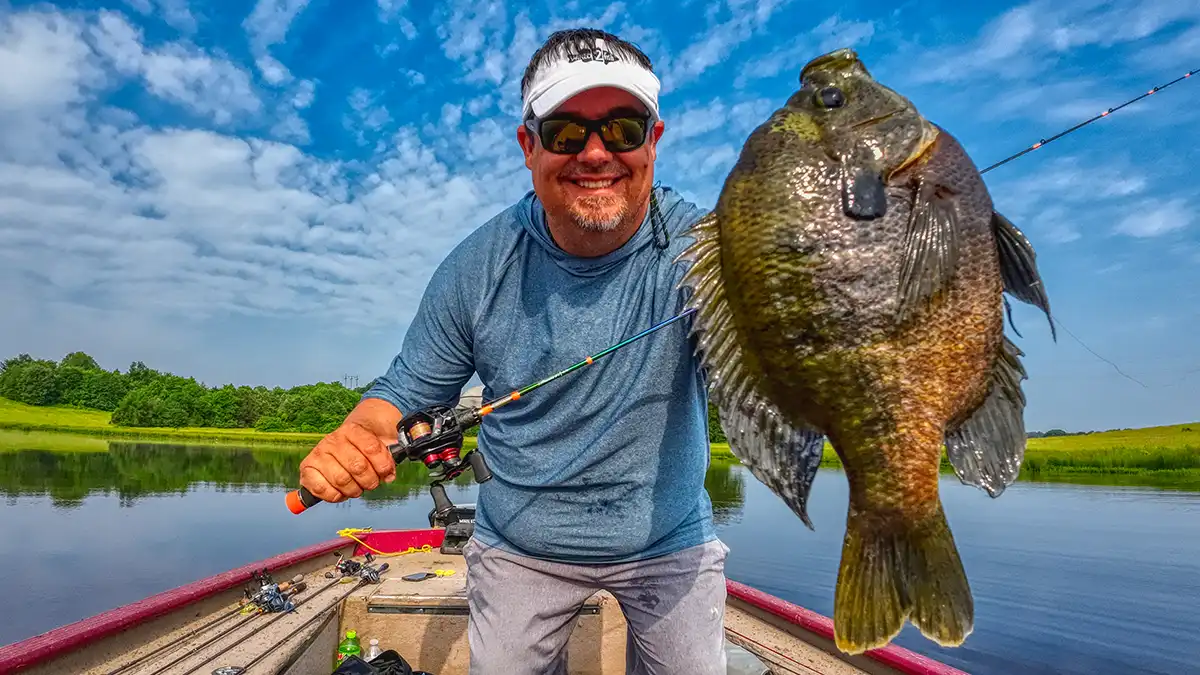Warning: Undefined variable $k in /home/nginx/domains/wired2fishcom.bigscoots-staging.com/public/wp-content/themes/understrap-child-0.6.0/functions.php on line 984
Warning: Undefined variable $k in /home/nginx/domains/wired2fishcom.bigscoots-staging.com/public/wp-content/themes/understrap-child-0.6.0/functions.php on line 987
Bait Finesse System, or BFS as most folks refer to it in casual speak, has been getting a lot of attention as more anglers are realizing the benefits and applications. Nevermind that a whole bunch of us are having a ball using finesse techniques on baitcasting gear to catch a multitude of different types of fish in nearly every environment in freshwater fishing.
I have taken a big interest in bait finesse or BFS in the last year as someone who travels a lot. I don’t always travel in my truck, and taking long rods is not always easy when traveling with others or with family. So my journey in bait finesse fishing started with building a BFS Kit for travel. I was quickly hooked, and it has blossomed from there.
We are sharing a collective of experiences and testing from the fishing community to provide a thorough and well-rounded introductory bait finesse guide. This will not be a self-serving piece to get link clicks. This is being built to help more people see the power of BFS and where it might apply in their fishing.
And honestly, I have had so much fun fishing with the light game in this way, it has rekindled my love of fishing for many species besides bass including trout, crappie, bluegill, shellcrackers and other sunfish. The fun of becoming a precision finesse angler is what I really want to share with others interested in using these finesse techniques with bait finesse rods and bait finesse reels to coax better quality fish regardless of the species from clear waters all over the midwest and beyond with finesse lures that always seem to work on pressured fish.
This guide will cover some history, some pros and cons of BFS, and then hopefully some exhaustive and in-depth information on gear and usage you can take action on to get ramped up to employ BFS in your own fishing.
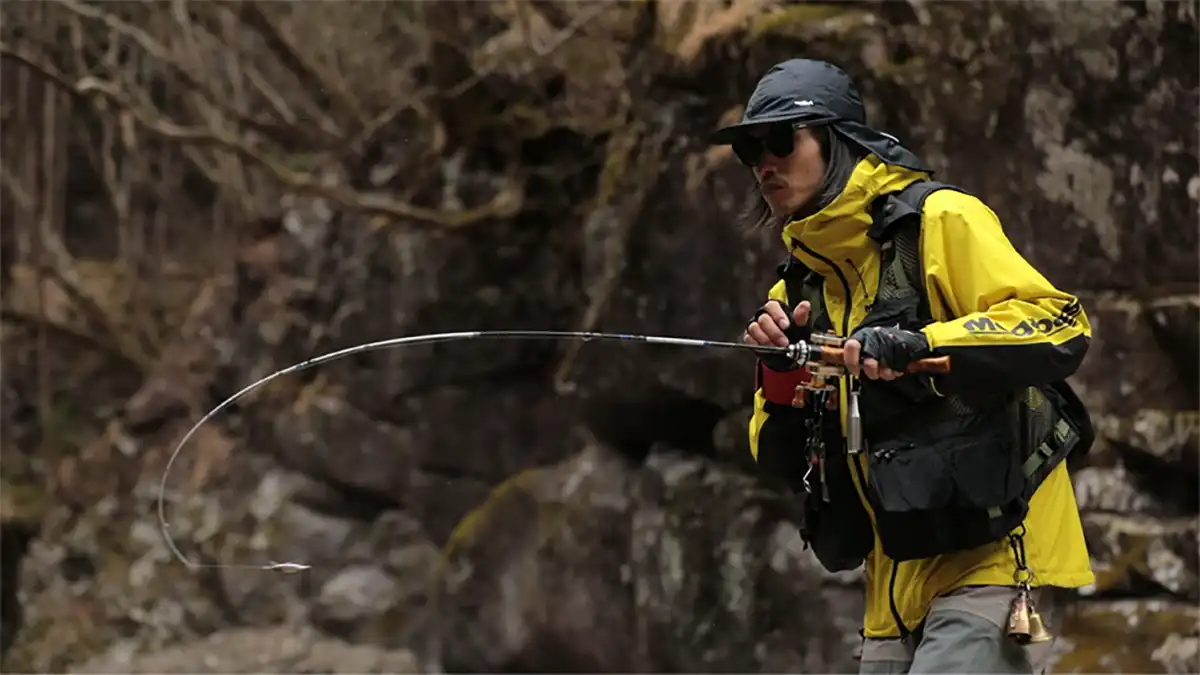
History of Bait Finesse System (BFS)
When it comes to the history and derivation of bait finesse system fishing, well this is where the water muddies a bit—pun intended. I spent a good bit of time over the last year talking with some people that have been into BFS for a lot longer than me. Some of the folks I visited with and quizzed about BFS include popular BFS YouTube creator and Tackle Tour field reviewer Hobie Wan Kenobi, the owner of Bait Finesse Empire, Amir Azzabi, Jimmy from the popular BFS YouTube channel raWr Fishing as well as other BFS anglers on Instagram, Youtube and of course the many manufacturers and designers of BFS products including but not limited to Megabass, DUO Realis, Shimano, Daiwa, Jenko and several others.
From talking with a lot of these people, it seems there are some misnomers about what BFS is and what it was supposed to be. From what I could gather in my interviews and research, BFS originated in Japan for a couple different fishing applications, somewhat in parallel. But the idea of fishing finesse lures on baitcasting gear, can probably be traced back to the Abu Garcia Ambassadeur 1500c of the late 70s and 80s that was built and intended to throw light baits on casting gear.
But in Japan, the technique was born of the need to present highly refined finesse baits into tight quarters on mountain streams for trout. So you were making short roll and whip casts to get tiny minnow baits and such into crevices between rocks, riffle runs and under tree branches with moving water and trees and narrow passages that left you little room to cast.
Simultaneously, the bass guys in Japan were looking for a way to present finesse lures to bass around cover in ultra clear waters and have a fighting chance of luring the fish out with gear that could not only handle the tiny lures, precision casts, but also the fight of bigger bass.
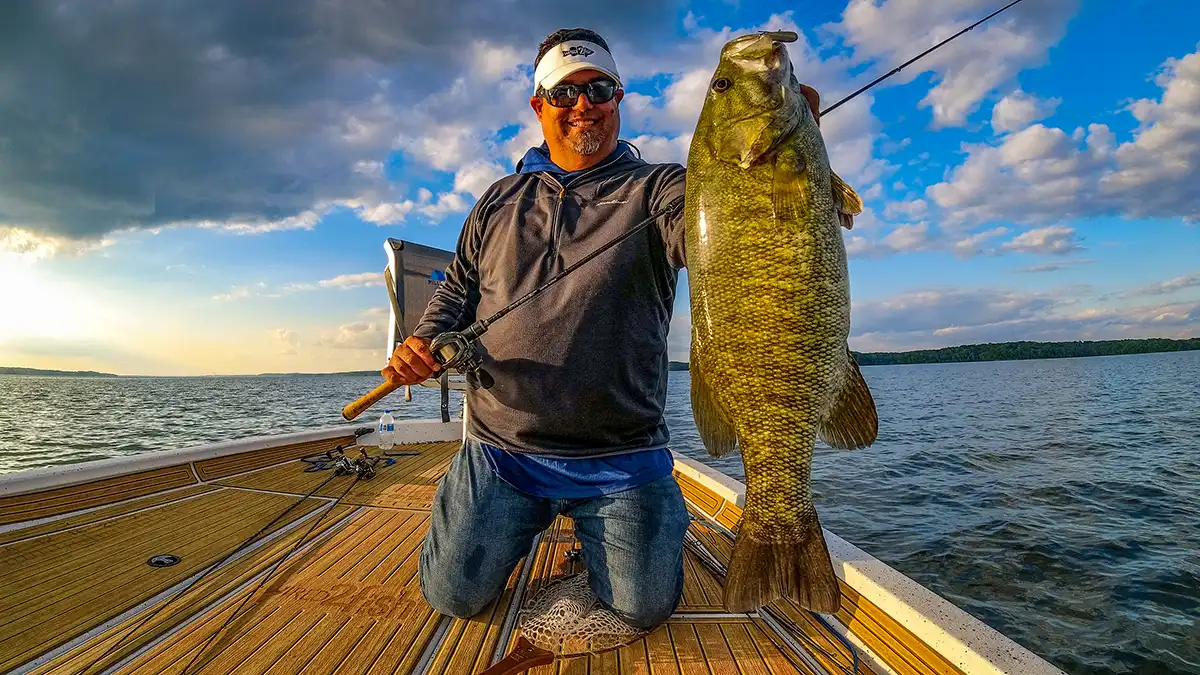
Why Bait Finesse System
Bait Finesse System gives you many advantages over say spinning gear for finesse fishing. But there are also some disadvantages that we’ll weigh in the next section. The first thing to share though is why I, and others like me, are drawn to it.
Bass fishing got really tough for us on Kentucky Lake, and that shift turned my attention to other things like crappie and bluegill. As I got more into these other species, I was using a lot of spinning gear and dealing with wind knots with braid, dealing with line twist without braid. Dealing with limited casting distance or rods that were too soft. Wishing I could throw lighter baits just a little bit farther but still have some backbone to fight big panfish. Wishing I had a bit more control of how the lure entered the water.
Jenko gave me my first BFS rod, as they were developing a BFS rod strictly for crappie fishing called the Double Down. This was two years ago. I was instantly hooked. I started learning nuances with it on almost every trip about how it presenting my lure better. Then noticed I was having more sensitivity on the bite. I was managing my line better. It was easier to make quieter presentations with pinpoint accuracy.
There are a lot of anglers into BFS who believe the measure a bait finesse reel is how light a lure it can cast. That is not bait finesse. It is not just how light of a lure can I throw on a baitcaster. There are some that believe it’s a replacement for spinning gear. It’s not that either. It’s a way to present lighter baits with precision control to ultra pressured fish in tight quarters.
Whether that’s hitting a small opening in or slack spot in a mountain stream, or worming a lifelike hard bait around shallow cover. BFS reels and BFS rods are designed to give you the ultimate control of small finesse lures.
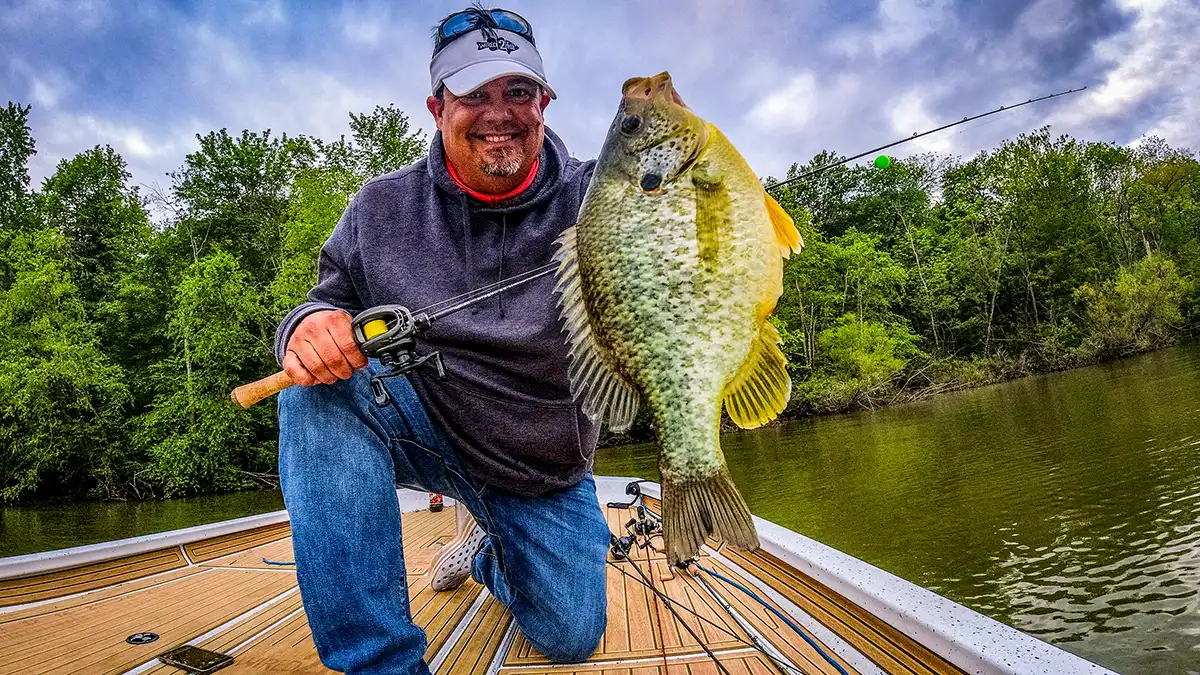
Pros and Cons of BFS
It’s probably a good idea to list the pros and cons of bait finesse and let folks make some decisions on whether it might be right for them. This will give you a quick rundown of the pros and cons of BFS and then some explanation from my experience and research.
Pros of Bait Finesse System:
- Better cast control
- Increased sensitivity
- Increased accuracy
- Better line management
- More distance with larger lines (not just ultralight)
- Clicker drag control
- More fun fight
- A lot of fun options
Cons of Bait Finesse System:
- Limited in deep water applications
- Rod and reel availability limited
- Learning curve on casting distance
- Learning curve on reel tuning
So to run through some of the pros and cons real quick, BFS reels and rods are made for precision casting of smaller baits. You can get some increased distance with larger lines on bait finesse than you can on spinning setups. This means I can have a little stronger line and rod to fight bigger fish but still get distance on super light lures.
The fact that we are palming the reels and rods gives us more sensitivity. I’ve really seen this in crappie fishing. I feel way more bites in my hand on bait finesse than I do on spinning rods. With bait finesse, I can turn my drag down pretty low, then put my thumb on the spool when I set the hook to get a good solid hookset and simply remove my thumb to let the drag take over on a run after I move the fish away from obstacles.
That added control is what really sets bait finesse apart.
Now if you are going to be fishing for smallmouth in 20-25 feet of water with light line, a spinning rod and reel is probably a better option. Most of the time you’re only going to have maybe 100 feet or so of line on your bait finesse reel because it has a really shallow spool. So bait finesse is made more for fishing in water 15 feet or less and often is a lot more productive in water 10 feet or shallower. So I would go with my spinning setup when fishing deep. And bait finesse for everything else.
I also have found hunting rods and reels online to be a bit cumbersome. I have had to purchase several reels overseas. While some great places like BaitFinesseEmpire.com have brought a ton of JDM bait finesse products stateside, there is still limited availability of better rods and reels here. Quite a few US makers are making good BFS rods now. However the reels are pretty much limited to Daiwa and Shimano and then one or two others from a few other manufacturers. So that’s a barrier I’m hoping gets a little easier for folks in the coming years thanks to the growing popularity of finesse fishing.
The other thing is the rods and reels are often on the high end. I’ve tested the gamut now of BFS rods and reels, and there are a few affordable options to get you started without breaking the bank. But I will also say I have a very healthy investment in BFS now because it’s incredibly addictive much like tracking down big custom made swimbaits.
So if you’re a real avid, enthusiast angler, you will love BFS. If you’re just a “use whatever you got” type angler, then, it might not be as exciting for you but it can still be highly effective for you.
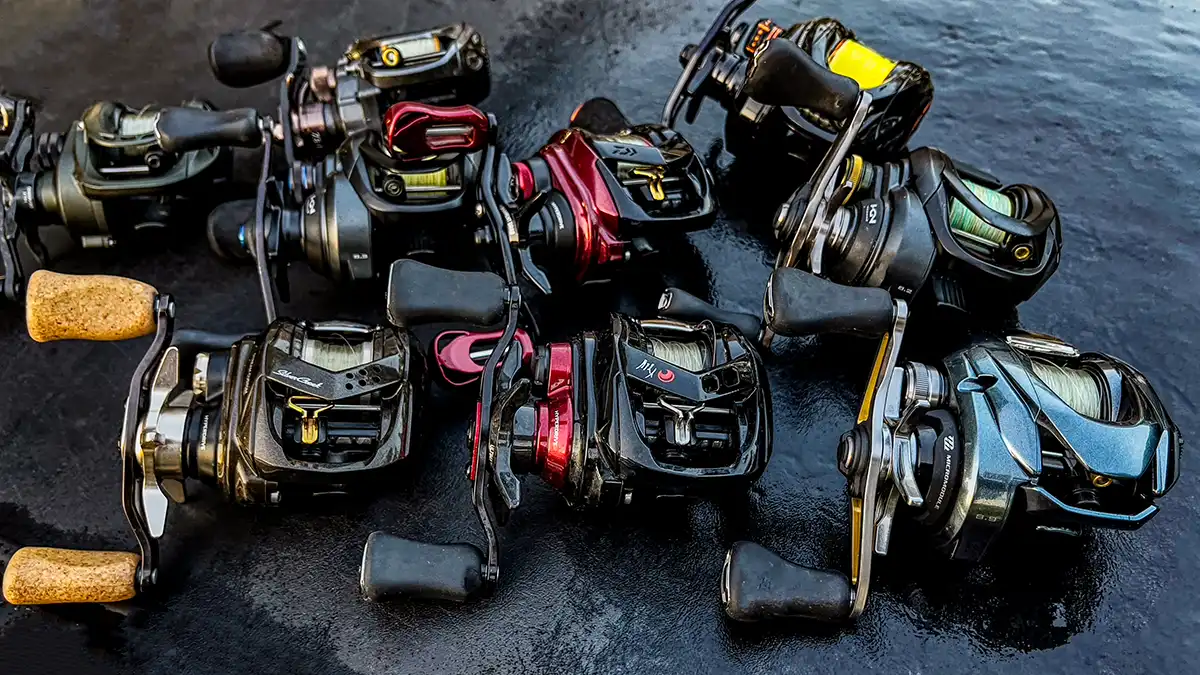
Bait Finesse System – BFS Reels
So at the crux of the whole bait finesse system is your BFS reel. A good BFS reel is worth its weight in gold. I will give you a rundown of what I feel are the best reels out there, the best affordable options and the best things to look for when purchasing a BFS reel. But let’s talk about the reels in general, and more importantly, how to set them to give you the best performance.
A BFS reel centers around a shallow spool, clicker drag and a simple tension and brake combination to get the reel dialed to throw lighter lures. The key is the spool. The lighter, shallower spool requires a lot less “start-up inertia” which is a fancy way of saying a lighter lure can pull line off the disengaged spool easier.
There is a whole secondary market of aftermarket shallow spools like Roro spools that enable you to upgrade existing reels to perform like what I would call a “hybrid BFS reel” because you do have better castability with lighter lures but not the lighter clicker drag.
But you certainly can turn a good reel into light lure casting BFS reel for a lot cheaper than buying a high-end, fully functioning BFS reel. I have seen in my testing, as well, where a Roro spool actually makes a good BFS reel great because the lighter aftermarket spool lets you drop down in lure size and weight to throw a lot lighter baits on the same reel.
So the shallow spool is where it’s at. After that, the drag is key. We’re often talking about using PE 0.6 nylon braid or small fluorocarbon or monofilament line like 4-pound test. So we want a drag that marries up with this tiny line not accustomed to conventional baitcasters. Because of this, most good BFS reels incorporate a lighter clicker drag. One of the keys here is you can fight a much bigger fish on the light tackle without fear of break off. And the ability to palm your reel gives you added control and sensitivity.
For example, my regular technique this spring when I was chasing 2-pound shellcrackers and 2-pound crappie on light line was to set my drag pretty light. When I would set the hook, however, I would place my thumb on the spool so the drag wouldn’t slip. This enabled me to get a good hookset, and then as soon as that fish started pulling hard, I let my thumb off and the drag took over instantaneously. This resulted in me losing hardly any big fish all spring on BFS. In fact, the only fish I lost happened while trying to land them at the boat without a net.
Best BFS Reel options
I have tested and recommend the following BFS reels for bait finesse system fishing:
- 21 Daiwa GekkaBijin Air TW PE [SEE HERE]
- 22 Daiwa Silver Creek Air TW Stream Custom [SEE HERE]
- 22 Shimano Aldebaran BFS [SEE HERE] [SEE HERE]
- 23 Daiwa Salamandura Air TW [SEE HERE]
- Tsurinoya Dark Wolf Ultra [SEE HERE]
- Shimano Curado BFS [SEE HERE]
- Shimano SLX BFS [SEE HERE]
- Lew’s Custom Lite Casting Reel [SEE HERE]
- KastKing Kestrel Elite [SEE HERE]
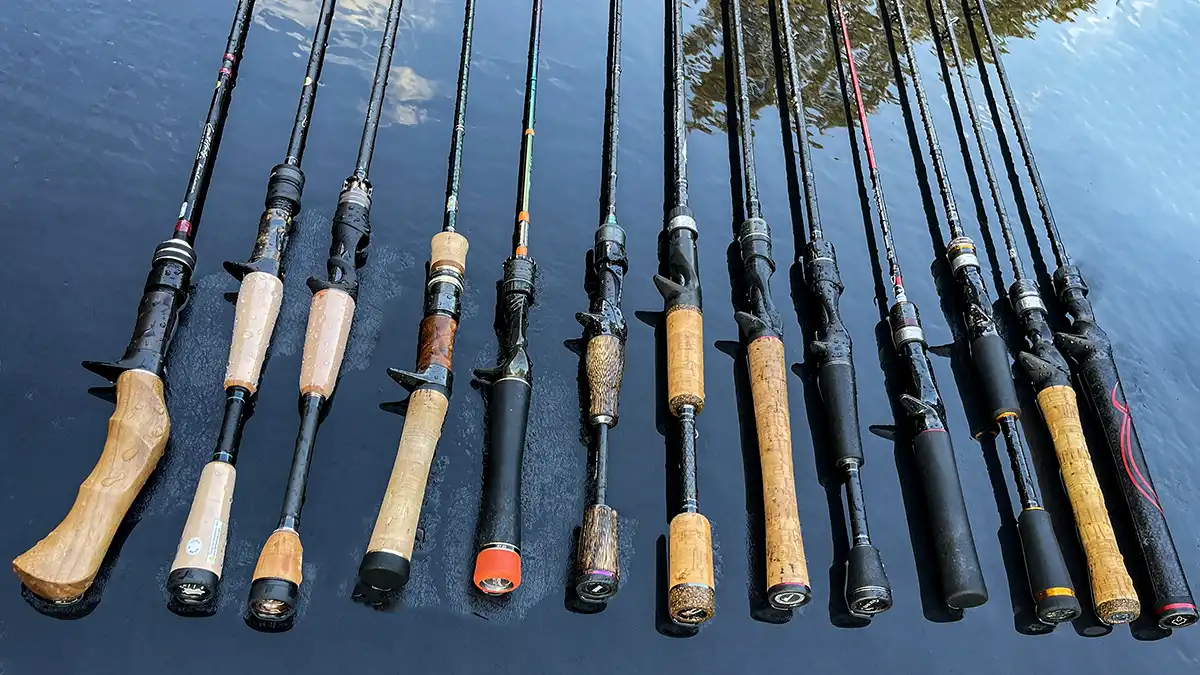
Bait Finesse System Rods
Fortunately there are quite a few BFS rods, especially if you want a BFS setup for bass fishing. The lighter stuff has a little less availability but you can generally find several of the brands regularly in stock.
So a good BFS rod has a pretty reflexive tip with a good backbone. The ones designed more for stream trout and small panfish, will have slow tapers and bend all the way to the reel. But you can still maneuver small trout in current. So the backbone is relative to what the rod is intended to do. But those littler lighter rods will launch a 1/32-ounce jig a mile on light line like 0.6 PE or 4-pound mono. And will give you really good distance on heavier line, which is where spinning reels tend to fail.
The BFS rod is also part of the bait finesse system that helps with casting. And that’s also a big key to having success using BFS setups and gear. You need to learn to not “whip” your baits out there. It’s all a smooth fluid motion where you are letting the rod load and smoothly cast the bait out there with the shallow spool and low startup inertia. When you whip the bait, you actually cause more backlashes and lessen casting distance and proficiency.
It’s also why roll casting and side arm casting is so good with BFS reels and BFS rods and why overhead casting is so poor. Remember you’re using a lot lighter baits but you’re using reels setup and rods built to fluidly and precisely cast these smaller lures. So no need to whip and force the bait out there.
But you have a lot of options with BFS rods. You want to match your rod to the baits you intend to throw on it. If you’re going to be targeting trout or bass with hard baits, you probably want a softer rod that loads a little better and has some forgiveness when fish are hooked. If you’re going to use single hook baits like jigs or jigheads and plastics, you probably want a rod with a little stiffer tip and more backbone. Now if I’m throwing a small jig for panfish, I will use a rod with a soft tip but a strong backbone.
BFS Rods I have tested and recommend for bait finesse system fishing include the following:
- Jenko Double Down ML [SEE HERE]
- Megabass Hunting Huntsman [SEE HERE]
- Megabass Triza Travel Rod [SEE HERE]
- Megabass Destroyer Pop X Stick [SEE HERE]
- Shimano Majestic XT BFS [SEE HERE]
- Tsurinoya Dragon and Dragon II rods [SEE HERE]
- Dobyns Sierra BFS [SEE HERE]
- Jackson Blast Beats [SEE HERE]
- MajorCraft Benkei [SEE HERE]
- MajorCraft Finetail [SEE HERE]
- Crony Trout Stream Ejection [SEE HERE]
- Ark Essense 68ML [SEE HERE]
Setting up your BFS Combos
So now you have your rod and reel and you’re getting ready to spool up and go casting. Whether you choose light braid or small diameter fluorocarbon or monofilament, understanding how to set your reel and use the rod to do the work for you.
While most of us that are fluent with baitcasters learned to set our baitcasters by tightening down the tension knob and then clicking the thumb bar and backing off the tension until our lure starts to drop. Then set the brakes if you fish in wind. But for BFS we are going to go with the exact opposite train of thought. You don’t have as much line on the spool and the spool requires a lot less pressure to force it to turn because of the shallow nature and lightness of it.
So instead, we crank our brakes down all the way first. Then we loosen the tension knob until you can grab the spool and shift it back and forth. You will hear it click side to side as you shuffle it. Now little by little you tighten the tension until that back and forth shifting of the spool is ALMOST gone. If you can’t shift it back and forth at all it’s too tight. If it just barely shifts back and forth then that’s the right amount of play for the lower startup inertia required by smaller lures.
Now make a cast. It won’t go very far because your brakes are all the way tight. Now back off the brakes and cast again. Repeat this process until you are getting maximum distance with no overrun of your line. Meaning the spool speed on a cast is married to the tension and brakes in unison. Now you are ready to BFS fish.
Now one key again is to not test all this with a whip cast. Remember side arm, roll cast, all in a fluid transfer of energy in a smooth fluid cast. That’s how you achieve maximum distance without overrun or backlash on a BFS setup.
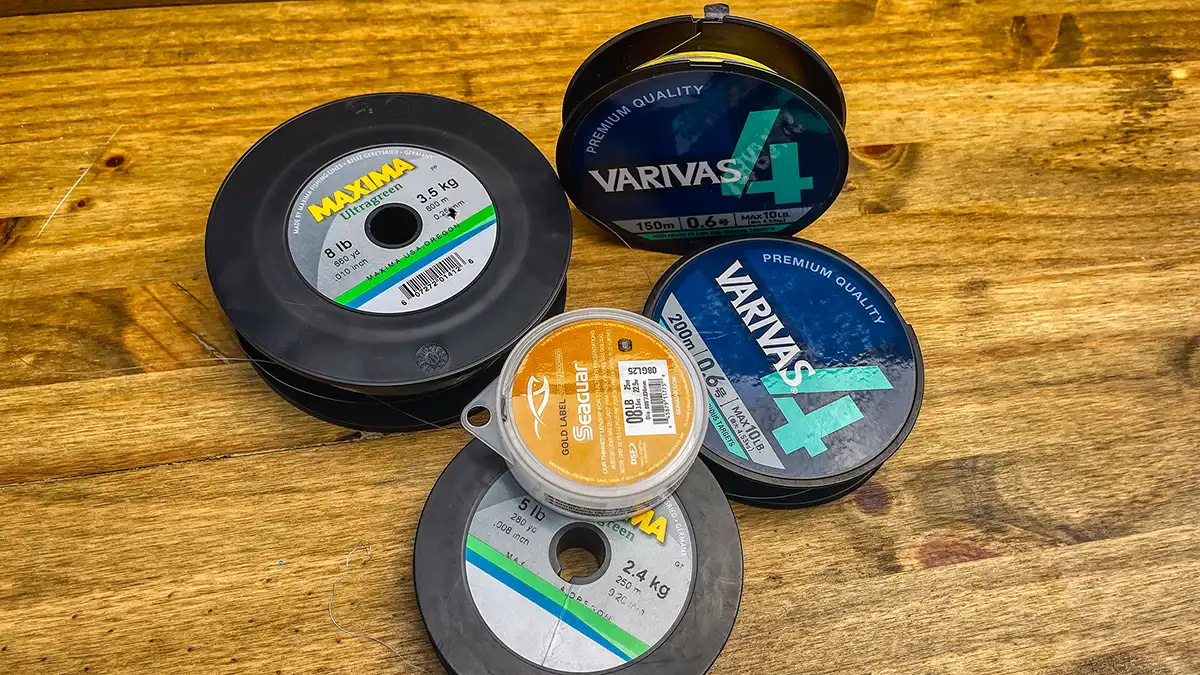
Bait Finesse System Fishing Line
So the big thing in Bait Finesse System for line is line diameter. In Japan, pound test doesn’t mean as much as line diameter when you start talking about precise control because pound test is a bit of a misnomer. You can have five companies claim the same pound test of their line yet all five of them have different diameter lines. That leads to a lot of inconsistency when trying to figure out what works best on your BFS reels. So yes you want to be concerned with pound test, but you want to be more concerned with line diameter when matching your line to your BFS combos.
Japanese line makers like Varivas make their lines very consistent by following the PE or Gou rating in Japan. Without going too far down the wormhole, I’ll try to briefly explain this. In 1947, the major line maker in Japan was Toray, and they came up with the first monofilament line or Ginrou. They established that 1 Gou = 0.165 mm line diameter.
So a 0.6 Gou, or when talking about braided line it is called a PE, is roughly 0.128 mm. In monofilament line, 0.6 Gou/PE is about 2 pound test. And 0.6 PE is about 8-10 pound test in braided polyethylene line depending on number of strands (4 or 8) and the manufacturer. Polyethylene is what braided line is made out of so hence the PE rating.
Long story short, more manufacturers, like VARIVAS for example, are trying to be consistent to consumers by always referring to line diameter instead of pound test, which is very subjective from one manufacturer to another. But the size (i.e. diameter) of the line is what matters in casting distance and accuracy.
I generally recommend a small diameter monofilament in 4-8 pound test, fluoro in 4-8 pound test and 4 strand braid in 8 to 10-pound test for most BFS applications or 0.6 to 0.8 PE/Gou.
BFS Fishing lines I’ve used and recommend would include the following:
- 4 to 8-pound Seaguar InvizX Fluorocarbon [SEE HERE]
- 6 to 8-pound Seaguar Red Label Fluorocarbon [SEE HERE]
- 2 to 8-pound Maxima Ultragreen Monofilament [SEE HERE]
- 10-pound PE 0.6 Varivas 4 Braid [SEE HERE]
- 9-pound PE 0.5 Varivas Super Trout Advance Bait Finesse Braid [SEE HERE]
- 10-pound PE 0.6 Varivas HighGrade PE [SEE HERE]
- 6-pound Sufix 832 Advanced Braided Line [SEE HERE]

Bait Finesse System Lures
Now to the fun part of bait finesse system fishing—the fishing lures. It’s worth noting that a lot of conventional tackle can be used on BFS gear. I use a lot of hair jigs, spoons, small crankbaits, topwaters, jerkbaits, spy baits and more that I use on conventional tackle with my bait finesse gear. The thing is I can throw the more realistic natural downsized versions with BFS gear while not having to drop down to 2 or 4-pound test.
For bass, I use a lot of 8-pound mono and fluoro and fish small, light baits with ease. So you don’t have to rush out and buy a bunch of new lures to get into BFS. Take your crappie jigs you were throwing on your ultralight spinning rod and put it on your BFS combo and go have a ball.
It’s also worth noting that BFS fishing is all about minimizing and downsizing. It’s not about having boats full of tackle and tackle bags the size of Hyundai Kias to carry all your gear. A couple of small modular tackle boxes in a small sling pack and a rod or two and you are gonna have a ball.
I just wanted to mention that before we dive into what I think are a bunch of the best BFS Lures right now.
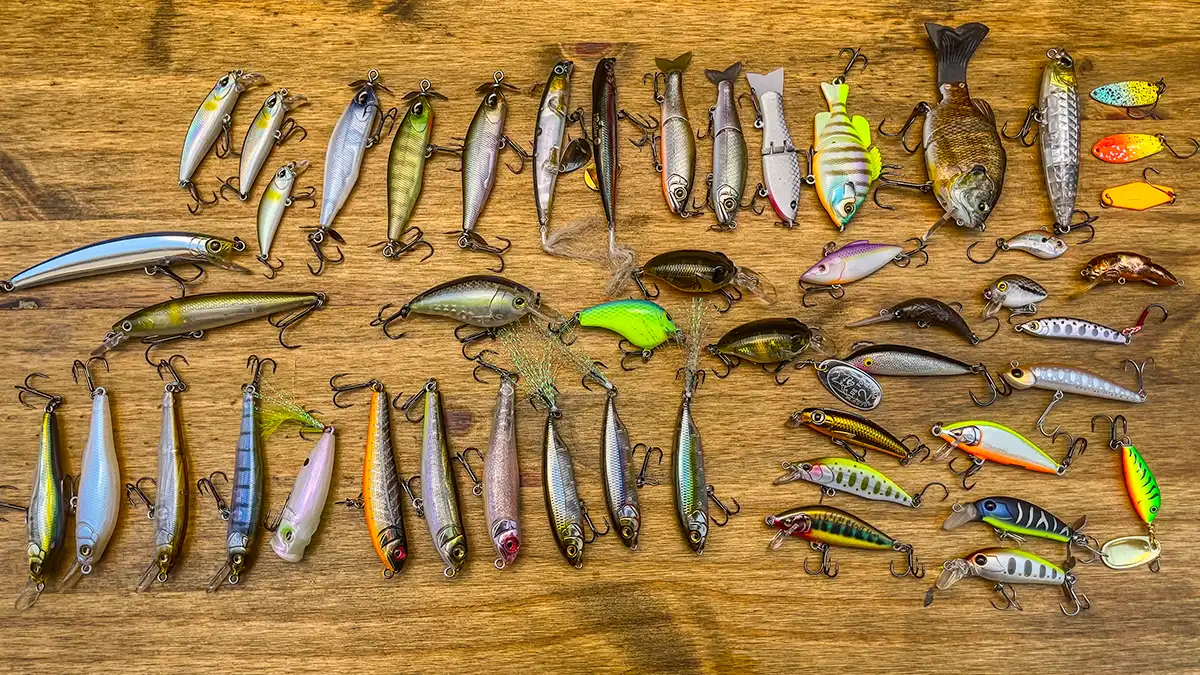
Bait Finesse Hard Baits
In the hard bait category, there are a ton of fun baits that work super on BFS reels and BFS rods. I have a bunch of small crankbaits, spoons, jigs, swimbaits, topwaters, spy baits, jerkbaits, and even some small buzzbaits, chatterbaits and spinnerbaits that I like on my BFS setups.
Most of the hard baits you will throw on BFS gear will be in that 1/8 to 5/16 ounce range. Some pushing 3/8 ounce. But a lot of 1/4 ounce or less hard baits catch everything from trout, bluegills, crappie and bass as well as other species that just think those small baits are alive.
And there are some absolutely stunning hard baits made just for BFS from companies like Megabass, DUO, Jackson, Tsurinoya, Rapala, Jackall, Gancraft, Mukai, Rebel and more.
I’ve caught some nice bass, crappie and sunfish on tiny glide baits, smaller jerkbaits and sinking minnow baits. Some big smallmouth on small topwaters. I’ve hit some nice fish in streams with the minnow baits and topwaters. But I find I have an absolute ball fishing with these micro baits and lighter baitcasting BFS combos and catching fish that often surprise me with their size on such small baits.
Some great BFS Hard Lure options for bass, panfish and trout include the following:
- Megabass Pop-X [SEE HERE]
- Megabass X-80 Trick Darter [SEE HERE]
- Megabass Karashi Twitch bait [SEE HERE]
- DUO Realis Ryuki Spearhead in various sizes [SEE HERE]
- DUO Realis Spinbait Alpha [SEE HERE]
- DUO Realis Shinmushi Cicada Bug [SEE HERE]
- Rapala Ultralight Shad [SEE HERE]
- Rapala Countdown Elite 55 [SEE HERE]
- Gan Craft Jointed Claw 70S [SEE HERE]
- Era Baits Glidebait [SEE HERE]
- Rebel Deep Teeny Wee Crawfish [SEE HERE]
- Jackall Baby Giron [SEE HERE]
- Yo-Zuri Snap Bean [SEE HERE]
- Z-Man Chatterbait Micro [SEE HERE]
- Z-Man Chatterbait Mini [SEE HERE]
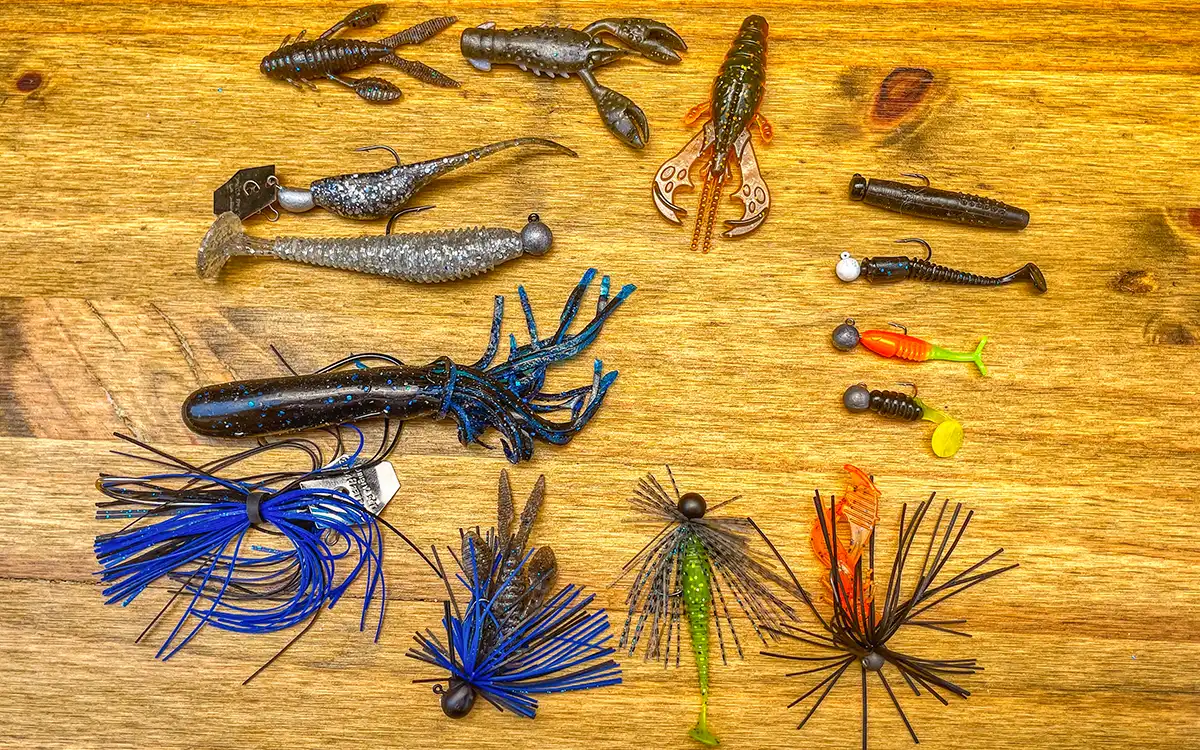
Bait Finesse Soft Baits
Probably the majority of my time with BFS fishing has come fishing soft plastics on jigheads or jigs. I’ve thrown every crappie and panfish plastic made on BFS rods and reels on a wide variety of jigheads and have had a blast. Pretty much every crappie, bluegill, shellcracker and sunfish I’ve caught in the last two years has been on a BFS setup.
In the last year, I’ve also really enjoyed how effective micro jigs and small plastics like craws, swimbaits, creatures as trailers are for catching bass and panfish. I have had a bunch of memorable catches with these, as well as the new line of micro plastics coming out from makers like Z-Man that catch a wide variety of bass and panfish. And of course the trusty Ned rig and small Neko rigged and wacky rigged plastics like 3-inch Yamamoto Senkos were a lot of fun catching big smallmouth this year.
There are a ton of finesse plastics and downsized versions of your favorite conventional plastics that are absolute killers on BFS gear.
The best part of this again is that you have a few small packs of baits stuffed in a small sling pack, grab your packable BFS combos and go. You’re super mobile whether you’re traveling for work or with the family. You can always have a good BFS kit ready with a few good plastics, some jigs and jigheads and you can do some major damage on any little hole of water you see on your travels.
Some of our favorite soft baits for BFS fishing would include the following:
- Noike Yabby [SEE HERE]
- Jenko Big T Fry Daddy [SEE HERE]
- Charlie Brewer Slider Panfish Grub [SEE HERE]
- Bobby Garland Itty Bit Slab HuntR [SEE HERE]
- Eurotackle Meta Craw [SEE HERE]
- Eurotackle B-Vibe [SEE HERE]
- Z-Man Micro TRD [SEE HERE]
- Z-Man Micro ShadZ [SEE HERE]
- Z-Man TRD CrawZ [SEE HERE]
- Strike King Rage Tail Ned Craw [SEE HERE]
- Keitech Swing Impact [SEE HERE]
- Missile Baits Ned Bomb [SEE HERE]
- Yamamoto 3-inch Senko [SEE HERE]
- Basstrix Live Trix [SEE HERE]
Jigs and Jigheads would include the following:
- Keitech Mono Spin Jig [SEE HERE]
- Keitech Guard Spin Jig [SEE HERE]
- Varivas Quick Change System [SEE HERE]
- Jenko Slasher Head [SEE HERE]
- Kalin’s Triple Threat Wire Keeper Crappie Jig [SEE HERE]
- Mule Fishing Mule Jig [SEE HERE]
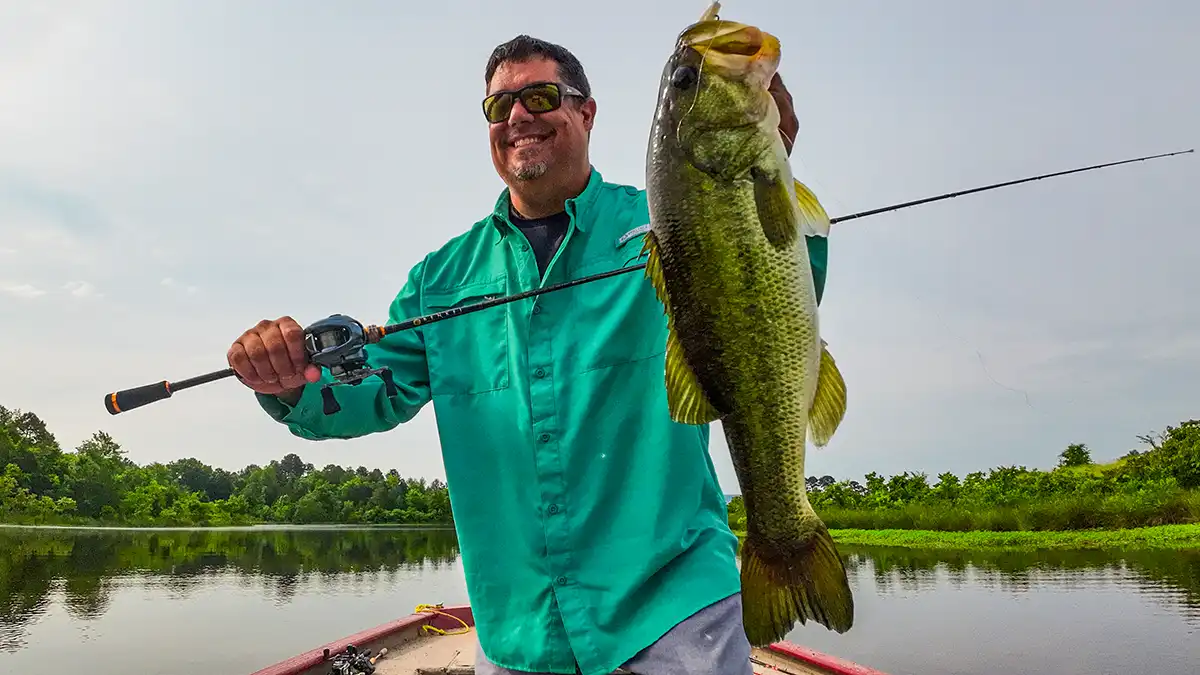
Best Places to Find BFS Fishing Tackle
So we’ve covered just about everything for a solid primer to Bait Finesse System. We will obviously go more in depth in a bunch of these areas and follow-up with individual reviews from us and some of the other great BFS anglers out there.
But if you’re wanting to get into it, you will find a ton of links throughout this piece but I thought I would also just share where I find a lot of bait finesse gear myself in the hopes I can share this great niche in finesse fishing with more anglers.
Most of these places I have no relationship with so I don’t get anything for mentioning these places. I just want you to be able to find some cool finesse fishing gear and go have a bunch of fun. Let me know if there are some other great places you source BFS tackle that you’re willing to share.
But for now, here’s a list of where you can find a bunch of great BFS gear:
- BaitFinesseEmpire.com
- TackleWarehouse.com
- TheHookupTackle.com
- FishUSA.com
- Digitaka.com
- Aliexpress.com
I have spent two years researching and testing BFS gear in 8 different states to put this guide together as well as talking with dozens of avid BFS anglers as well as manufacturers, designers and retailers. Special thanks to Bait Finesse Empire, Megabass, Hobie Wan Kenobi, Jimmy from RaWr Fishing and others who had a hand in helping me on my own personal BFS journey. I hope this information proves helpful to others and we will continue to update and expand this information with additional pieces.
